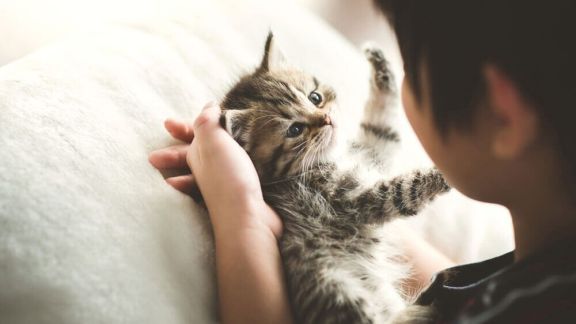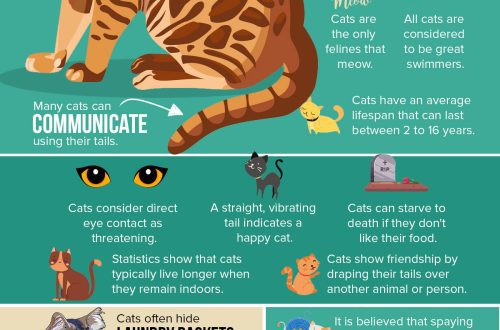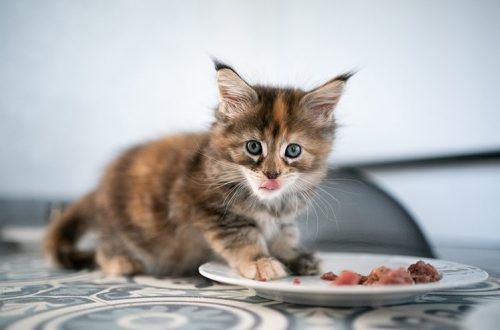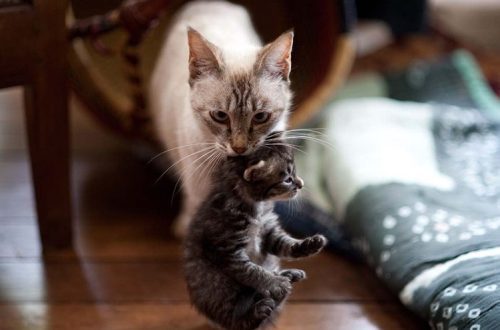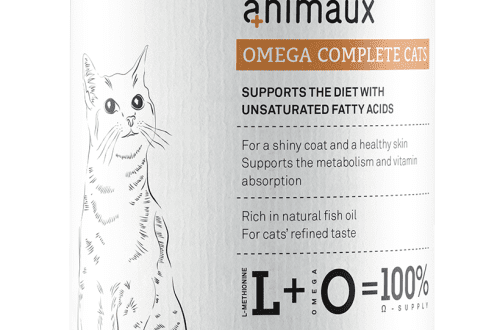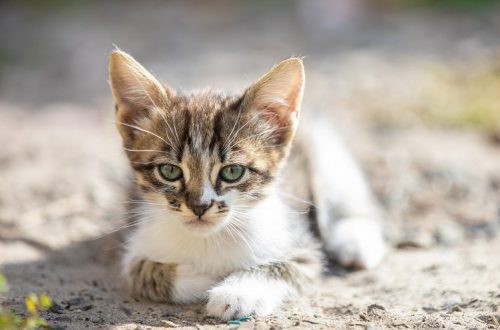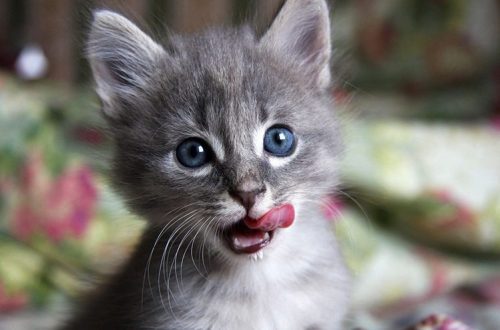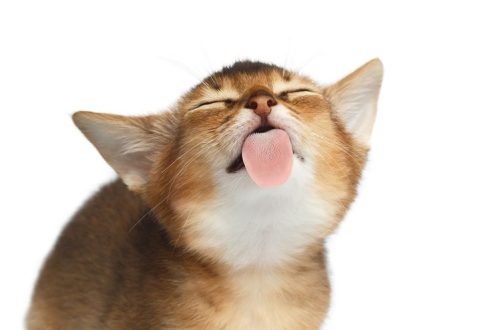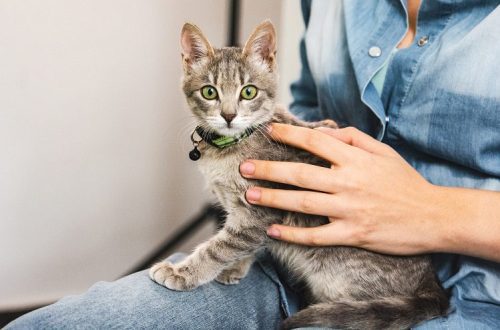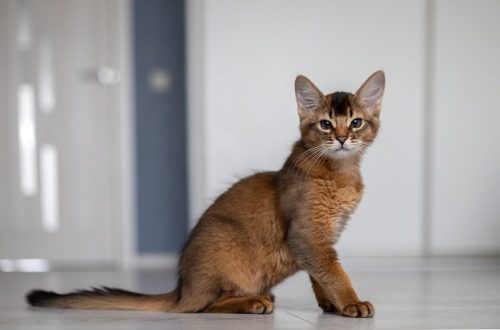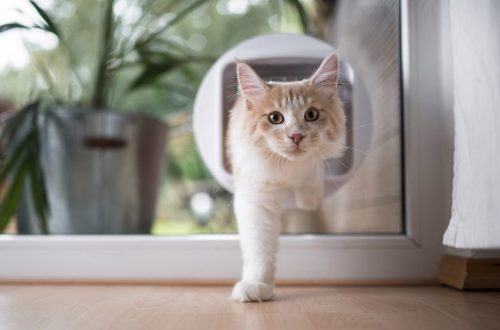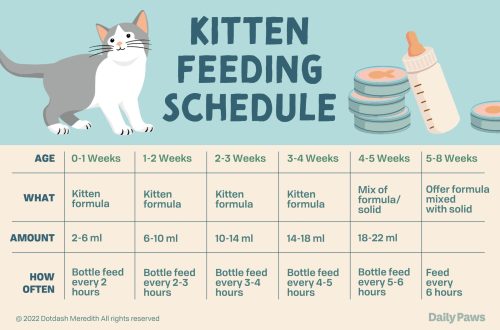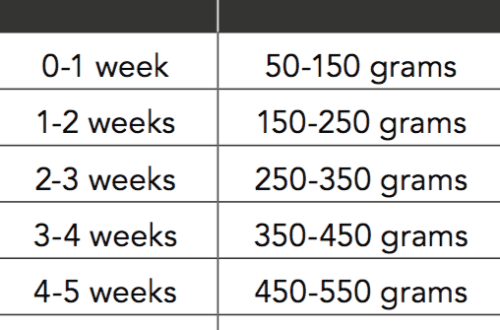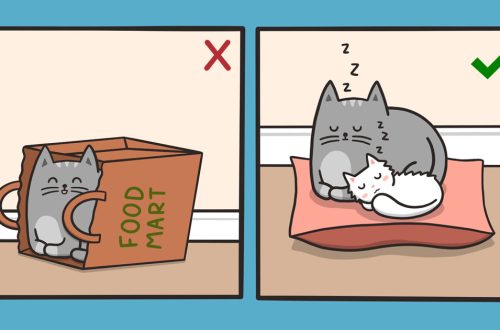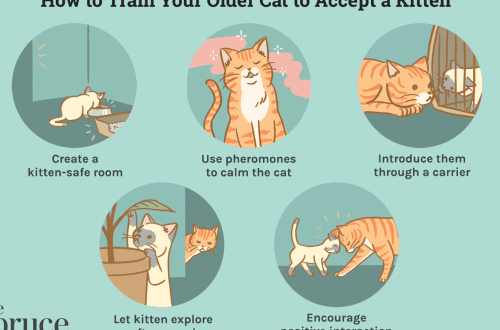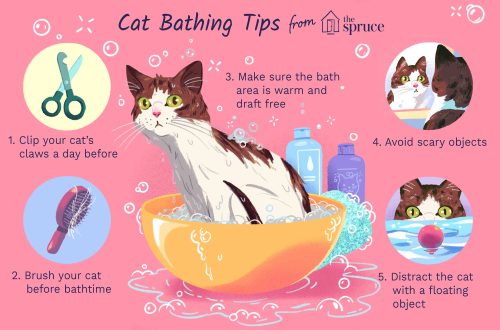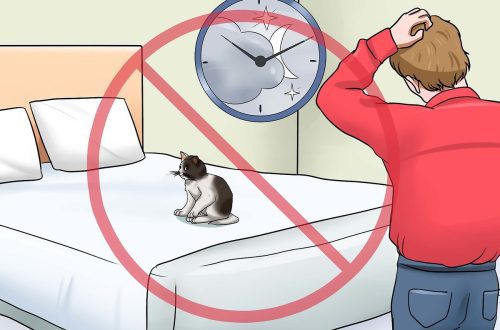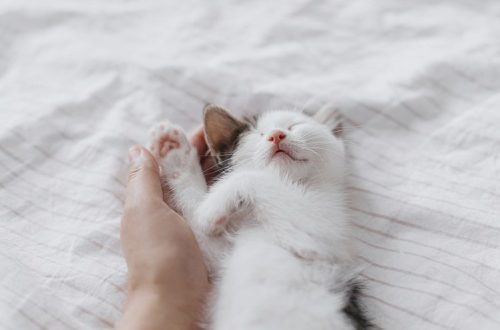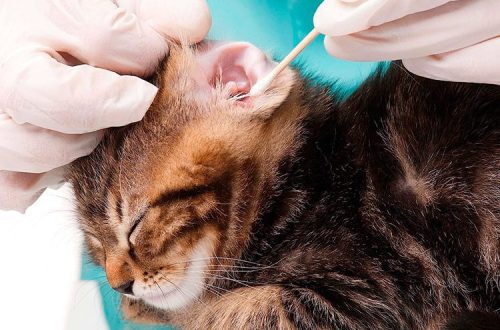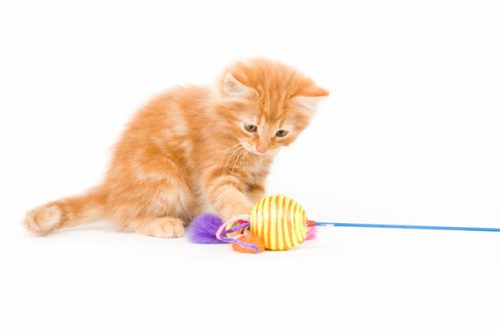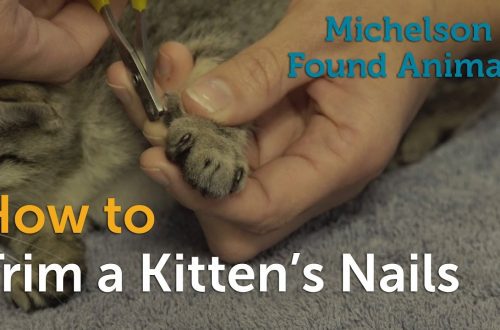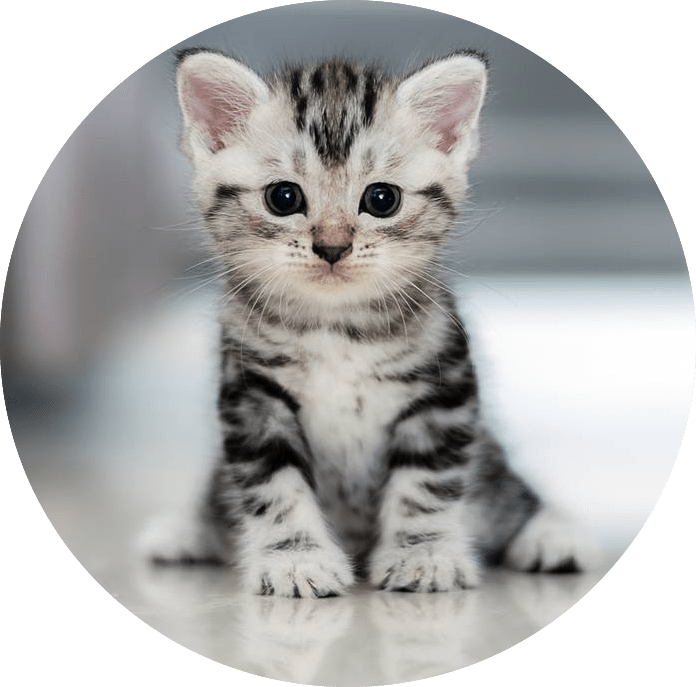
All About the Kitten
In the first months of life, the kitten is not yet strong either physically or psychologically, therefore, it needs special care and attention. He was separated from his mother, and now the responsibility for care falls on the shoulders of a person. For proper physical development and rapid socialization, the pet needs to create comfortable and safe living conditions.
WHAT YOU NEED TO PROVIDE A SMALL PET
The owner of the pet should try to bring the conditions of keeping the pet as close to natural as possible. That is, a kitten who is only one month old will need the same care that a cat mother could provide him. This will help him quickly adapt to his new home.
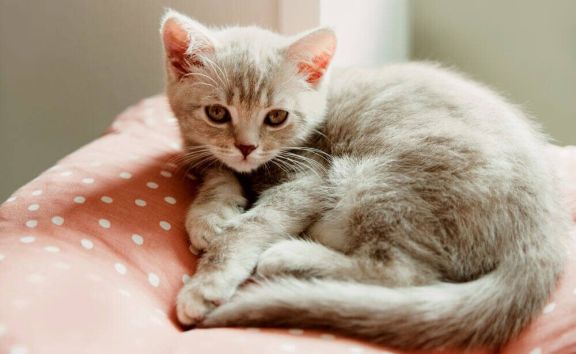
SLEEPING PLACE
Prepare a cozy and warm bed for the kitten (you can fit a cardboard box or a capacious wicker basket under it), which must be placed in a secluded place. It is important that it does not stand in a draft or next to heating appliances. From above, it is desirable to install a semblance of a roof – you can cover the box with a light cloth that allows air to pass through well, or put it under the table. Once a day, the diapers with which the couch is covered should be changed.
Make sure that other pets, if any, do not climb into the “nest” where the kitten sleeps.
TOILET
From the first hours of the appearance of a kitten in the house, start accustoming him to the toilet. For this, prepare a tray with low sides so that a small pet can climb into it on its own.
Put him in the litter box immediately after coming home, then after the first feeding. Don’t wait for the kitten to find the toilet on its own. Help him remember this place – periodically take the pet to the tray and get him to “mark” him.
As a filler for a cat litter, you can not use granules, which, when dried, turn into large lumps. It is almost certain that the kitten will want to taste them, and this can lead to blockage of the digestive tract. At first, the toilet tray can be covered with disposable diapers, toilet paper, or fillers made from paper and wood waste can be used. They do not stick to the paws, and when they enter the stomach, they come out naturally. Alternatively, you can install a tray with a grill. Such a toilet will have to be cleaned several times a day, but it also has its advantages: the apartment will not have an unpleasant specific smell that appears when using low-quality fillers or diapers.
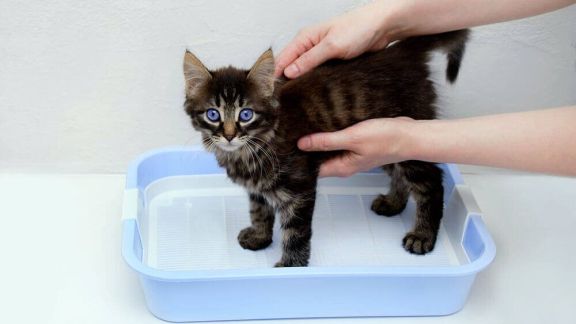
Subsequently, for a kitten, you can purchase a closed tray-house. It looks more aesthetically pleasing than the open version, but due to its large size it is not always possible to place it in an apartment so that it does not interfere with anyone.
Post Grid #1
WHAT TO DO IF THE KITTEN DOES NOT GO TO THE TRAY
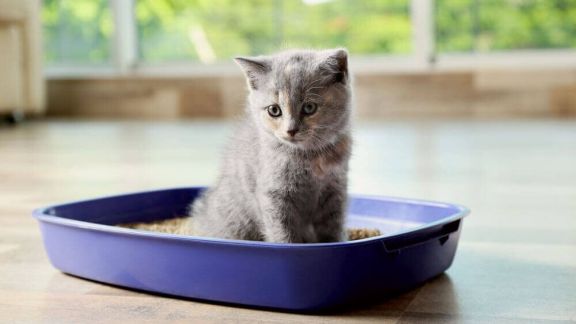
The toilet for a cat should always be clean. Otherwise, the pet will look for another place. If the kitten categorically refuses to go to the tray, try changing the filler. Perhaps the pet simply does not like its composition. If the problem is not in the filler, use special products that are sold in pet stores. Spray a lavender oil or catnip scented spray onto the grill or diaper. He encourages a small pet to go to the toilet exclusively in the tray. Cats, on the contrary, do not like the smell of citrus fruits: to scare away the animal, add an orange or lemon-scented liquid to the water to wash the floor, spray it on those places in the apartment where the kitten tried to sit down.
The kitten tray should be in a secluded place, such as a bathroom or toilet, but care must be taken to ensure that this room has free access. If you notice that the kitten does not go to the toilet at all, contact your veterinarian immediately.
TABLEWARE
Very often, owners use ordinary tea saucers to feed a kitten. This option is possible, but only for a while, if you did not have time to pre-purchase special bowls. It is better to take care of buying cat dishes in advance. When choosing bowls, consider a few points:
- the height of the sides should correspond not only to the size of the pet, but also to the type of food: for dry, buy a bowl with sides, for wet and natural – in the form of a bowl;
- for water, put a wide bowl with sides – cats do not like to drink from flat dishes;
- choose the depth and shape of the bowl taking into account the characteristics of the kitten’s breed – it will be inconvenient for pets with a flat head shape to eat and drink from deep dishes;
- bowls that are too narrow are not suitable – most cats do not like it when their whiskers and hair touch the sides or get dirty in the food while eating.
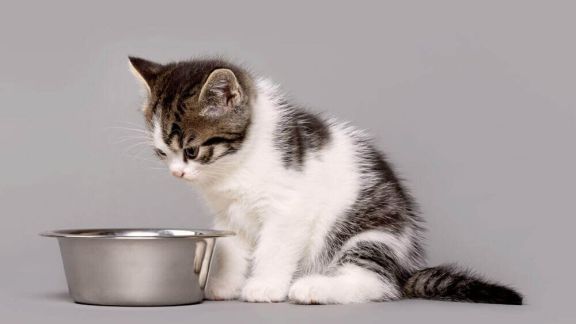
Take care that the bowl does not drive on the floor. To do this, you can put a rubber mat under it or attach suction cups to the bottom. You can buy a ready-made stand for cat bowls – it is more stable, and it is more convenient for a cat to eat from it.
Dishes for cats are made of plastic, metal and ceramics. Choose any, but be sure to watch how the kitten reacts. If he doesn’t like eating out of a new bowl, try the same one, but in a different material.
The dishes should be washed after each feeding and the water should be changed regularly.
TOYS
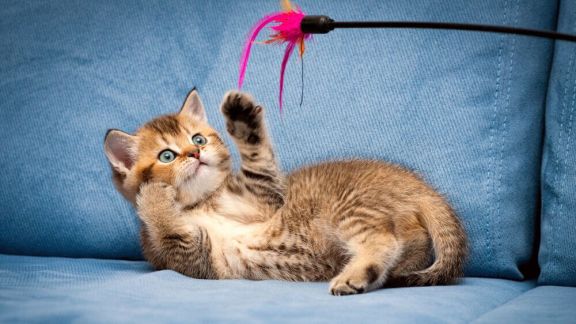
The game is a kitten’s favorite pastime, so he needs toys:
- mouse – it is desirable that it be made of natural fur, you can buy a clockwork or do it yourself;
- ball – small size with a rough surface;
- teaser fishing rod – make sure that the toy does not contain small and sharp parts that the kitten can swallow or get hurt;
- scratching post – buy upright and floor models made from environmentally friendly materials, spray with catnip spray, the smell of which attracts animals, praise the kitten every time he uses the toy for its intended purpose.
An excellent solution would be to purchase a gaming complex, which includes all of the items listed.
KITTEN CARE
Cats of any age need hygiene procedures. Kitten care includes cleaning eyes, ears and teeth, combing hair, bathing. Use only special tools and tools that can be purchased at a pet store. It is necessary to take care of timely vaccinations to protect your pet from dangerous diseases.
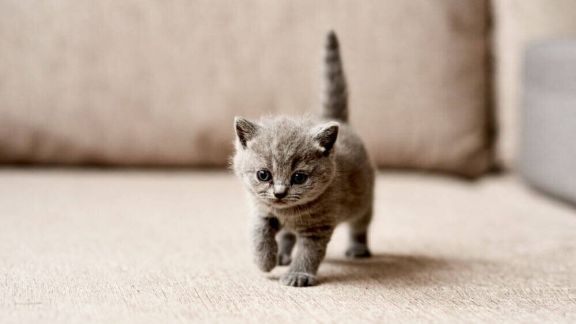
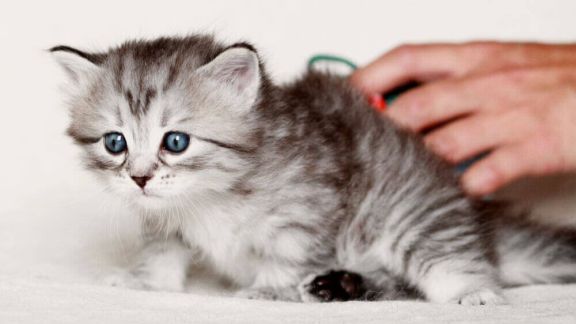
WOOL
Care for the coat of monthly kittens is practically not required. At this age, it is not recommended even to bathe them, it is enough to occasionally spray them with a grooming spray, which cleans the coat from particles of dust, dirt and dried food, and comb it with a soft mitten.
Starting from the age of 2 months, to care for the kitten’s coat, you will need combs, combs, slickers, and mat cutters. The choice of tools and the frequency of combing depend on the breed of the pet: long-haired should carry out this procedure at least 3 times a week, short-haired enough 1 time. During periods of molting, the kitten is combed out daily (regardless of the length of the coat).
CLAWS
For cutting claws, buy special guillotine-type scissors – a nail cutter. It is impossible to use ordinary manicure or sewing scissors, as the structure of the claw can be damaged. The procedure is contraindicated for monthly kittens, since the formation of claws at this age has not yet ended.
For the first time, the nails are cut no earlier than the pet is 5 months old. Before the procedure, the nail cutter must be treated with a disinfectant. Only the transparent part of the claw is cut off, in which there are no blood vessels, while the direction of the cut should repeat the natural bend.
Teach your kitten how to properly use the scratching post from an early age. Show him where it is and how it “works” by running his paws over the surface.
TEETH
When the kitten is only one month old, dental care is not yet required, but the owner should carefully monitor the condition of the gums. If they are inflamed, see your veterinarian for treatment advice. From about 3-4 months, when all the teeth finally erupt, they are cleaned with a special brush and toothpaste once a week.
EARS AND EYES
At the age of one month, the pet needs careful hygiene of the eyes and ears. Examine them daily, rinse the kitten’s eyes with warm water. In small pets, increased lacrimation is often observed. As a rule, this happens in the morning. If the tears are transparent, then there is no cause for concern, but if a cloudy and purulent liquid flows from the pet’s eyes, contact your veterinarian to find out the cause of the inflammation. Use cotton swabs to clean your ears. Before the procedure, they should be slightly moistened with water or a special gel. Be very careful not to damage the inner surface of the ear. As a pet grows older, the frequency of care for the eyes and ears of a pet, as a rule, does not change.
BATHING
It is very important to take into account the peculiarities of caring for kittens so as not to harm their health. Bathing a pet is allowed only from 2 months of age and no more than once a month. Depending on the breed and as you get older, the frequency may decrease. Despite the fact that cats are naturally clean and already from the first months of life they know how to lick their hair, it is not necessary to completely refuse bathing.
To bathe a kitten, buy a special hypoallergenic shampoo with a conditioner effect. It not only cleanses and makes the coat shiny, but also moisturizes the skin, protects against the appearance of parasites.
VACCINATION
Vaccination is an essential part of animal care. The first vaccination is done not earlier than two months of age. By this time, the kitten’s immunity, which he receives with mother’s milk, ends. But if he was weaned from the cat earlier, then he becomes practically defenseless to diseases. Therefore, when taking a one-month-old kitten, the owner must ensure that before the day of the first vaccination and within 3-4 weeks after it, all household members comply with quarantine rules:
- did not let other people’s animals home;
- wet cleaning was carried out several times a day;
- thoroughly washed shoes after walking on the street.
Such measures are necessary in order not to infect a pet with a dangerous virus that can be carried on street shoes or “caught” from a neighbor’s cat.
Vaccination is carried out only if the kitten is absolutely healthy. Otherwise, the vaccine will be ineffective and may cause serious complications.
PREPARATION FOR VACCINATION
Not later than 2 weeks before vaccination, the kitten must be shown to the veterinarian. The doctor will examine the animal, assess its state of health, select drugs for the destruction of ectoparasites (fleas, ticks) and worms.
FIRST VACCINATION
For the first time, as a rule, a complex vaccination is given, which includes vaccines against rabies, distemper, viral herpes, calicivirus and rhinotracheitis. After 3 weeks, to consolidate the effect, revaccination is carried out.
Complications after vaccination are extremely rare, as a rule, serious conditions, in particular, an allergic reaction, appear within 1 hour.
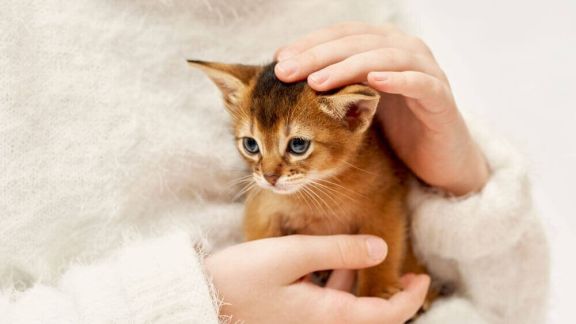
For several days, monitor the condition of the pet. In case of seizures, impaired coordination of movements, diarrhea, vomiting, contact your veterinarian immediately. In rare cases – when using a low-quality vaccine or a hidden disease – the vaccine may not work or give an atypical reaction. The sooner a kitten receives treatment, the more likely it is to recover.
Since the immune defense weakens over time, a year later the cat is re-vaccinated, while the preparation procedure is also repeated. Contact only trusted veterinary clinics, where they can guarantee the high quality of the vaccine and veterinary care.
CHIPPING
The introduction of a microchip under the skin of a kitten is a fairly common procedure, in some countries it is mandatory for all pets. It is relevant not only for owners of show cats (such pets can cost several hundred and thousands of euros, so their loss can cause serious financial damage), but also for ordinary cat lovers. Thanks to the chip, it is easy to identify the animal.
A microchip is needed not only to quickly find a pet if it is stolen, but also when traveling abroad, since it stores the data necessary for the border service.
The chipping procedure is completely safe and painless for the animal, so it is carried out starting from 2 months of age. The chip itself is a capsule the size of a grain of rice, made of bioglass. It is injected under the skin with a special syringe. The fact of chipping is recorded in the kitten’s veterinary passport, and the microchip number is entered into the electronic database.
KITTEN DIET
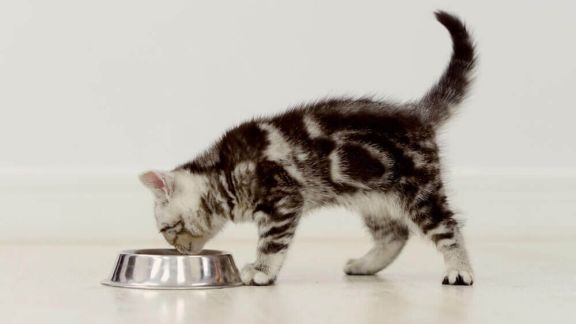
Cat’s milk contains all the nutrients that a newborn kitten needs for growth and development. If he is weaned from his mother, then the owner must provide a diet that would correspond in consistency and composition to mother’s milk.
It is strongly not recommended to feed the animal with food from the table. His gastrointestinal tract is not able to digest flour products (bread, pasta), and spicy, salty, smoked foods, sweets, river fish can harm the body.
Kitten nutrition should be varied, complete and safe. For example, you can not feed a kitten with cow’s milk. It contains lactose, which causes an allergic reaction in the animal.
With natural nutrition, it is almost impossible to provide a balanced content of nutrients and vitamins, which is why it is better for a kitten to choose ready-made food.
INDUSTRIAL FEED
Veterinarians and felinologists recommend industrial feeds made on the basis of natural products as the best way to feed a pet. Their calorie content and composition are precisely calculated and cannot harm the kitten’s health. From the first days of independent life, give your pet a complete industrial food , created taking into account the developmental features of his body. Choose the food that your kitten likes best – meat in sauce or jelly, pate, mousse. PRO PLAN ® diets are a balanced combination of nutrients and nutrients, selected in accordance with the needs of the age.
If you prefer ready-made food, then the package should be marked “for kittens”. Proper nutrition is the key to the harmonious development and growth of the pet, strong immunity and health throughout life. Only with their help it is possible to provide an individual approach to the nutrition of animals, including those with special needs (sensitive digestion, prone to excess weight).
NUTRITIONAL NORMS
The daily norm of food for a kitten aged 6-12 weeks is 20-75 g.
The main rules of feeding:
- provide a variety of diet for the proper development of the body’s defense systems (immune, nervous, digestive, excretory);
- observe the norms and mode of feeding;
- do not mix different types of food.
When feeding based on natural products, follow the advice of your veterinarian exactly. Vitamin supplements should be bought and administered only in the dosage prescribed by the doctor.
It will be a big mistake if you try to compensate for the lack of vitamins and trace elements by increasing the portion of the products that contain them. Such nutrition can seriously harm the digestive system of the animal. It is because of the danger of an overdose or, on the contrary, a vitamin deficiency, that most breeders recommend using ready-made food for feeding kittens. In them, all the nutrients are balanced, taking into account the weight, age, special needs of the pet. Feeding rates for industrial feed are precisely calculated and are always indicated on the product packaging.
IF THE KITTEN IS SICK
Keeping and caring for a kitten at the age of one month is not very difficult if you follow the recommendations of veterinarians and breeders. Watch your pet’s behavior: a new complementary food should not cause him a painful reaction. Diarrhea, vomiting, apathy, refusal to eat are signs of a serious condition. Report this to your veterinarian and take corrective action as soon as possible. Remember that at a young age, the body of animals is vulnerable to diseases, so the kitten needs not only your attention and care, but also competent care.
